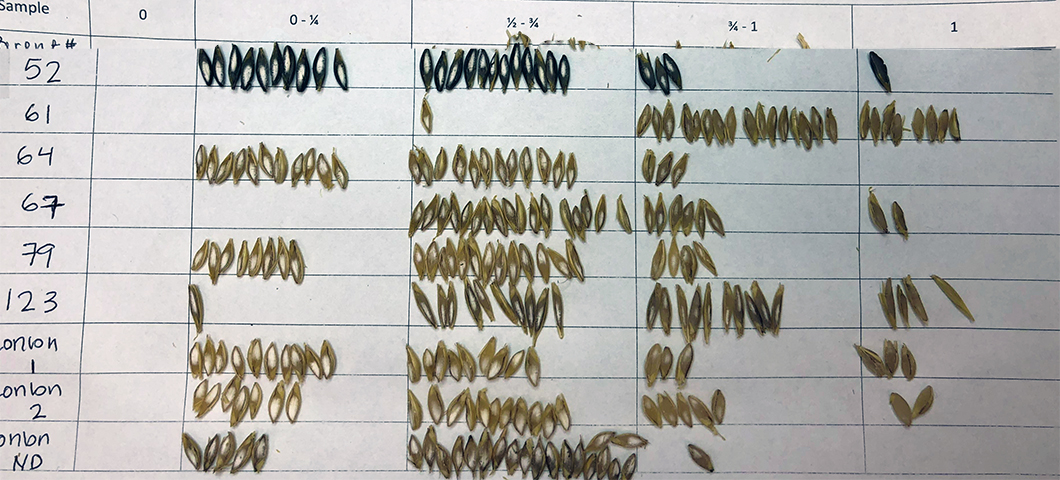Seed Shape Impact on Barley Hydration and Malt Quality
Evan Crittenden: Undergraduate Researcher
Problem Statement:
The potential of barley to meet malt quality standards has a huge impact on Montana’s economy. Barley farmers can receive twice as much for malt barley than barley sold for other uses. Montana breweries also require quality malt to use in their production. However, malt quality is genetically complex, and further research is needed to better understand this phenotype.
Purpose:
Since seed shape, seed size, quality of hydration, germination, and malt quality have never all been studied in a single experiment, the purpose of this research is to genetically dissect the impact of seed morphology on malt quality.
Material used is a collection of Nested Association Mapping (NAM) populations.
*A NAM panel consists of multiple bi-parental mapping populations all with one parent in common, in this case Conlon. NAM panels provide higher resolution and more power to genetically dissect traits.
Objectives:
-Evaluate moisture and quality of hydration on parent lines to identify one with significantly higher hydration than Conlon
This step is complete and parental line 61 has been selected. As seen above, seeds sorted for hydration (called a Chapon test) shows that line 61 has the greatest # of seeds well hydrated (endosperm fully translucent, least # with a dry starchy portion).
-Perform various tests on the full population of lines created by crossing Parent 61 and Conlon to evaluate hydration and malt quality - then use this data with a quantitative trait loci (QTL) map of seed shape.
Hypothesis:
Improved understanding of these factors will inform and enable the breeding program to release high quality lines for growers and the ultimate end-users.

